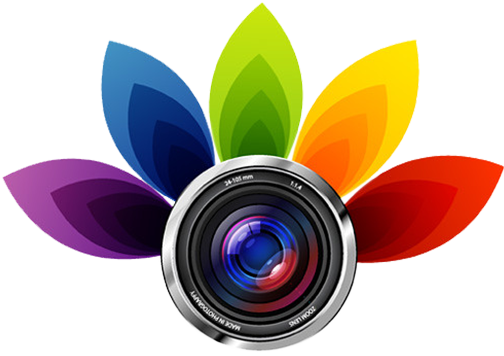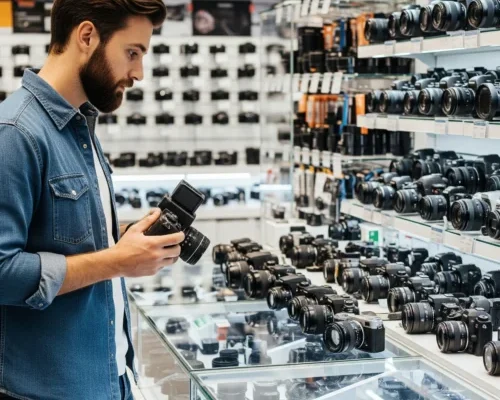Finding your dream camera can be tricky with so many models and features out there…
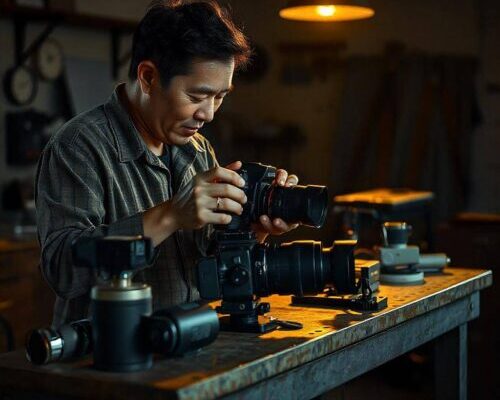
Take a Professional Photos with the Best Camera
As a photographer, having the right equipment can make all the difference in capturing high-quality images. A camera is an important tool for producing stunning professional photos that stand out from the crowd.
In this article, we will look at the best cameras for professional photography. We will also discuss important features to consider. You will learn how to master camera angles and composition, and more.
Choosing the Right Camera for Professional Photography
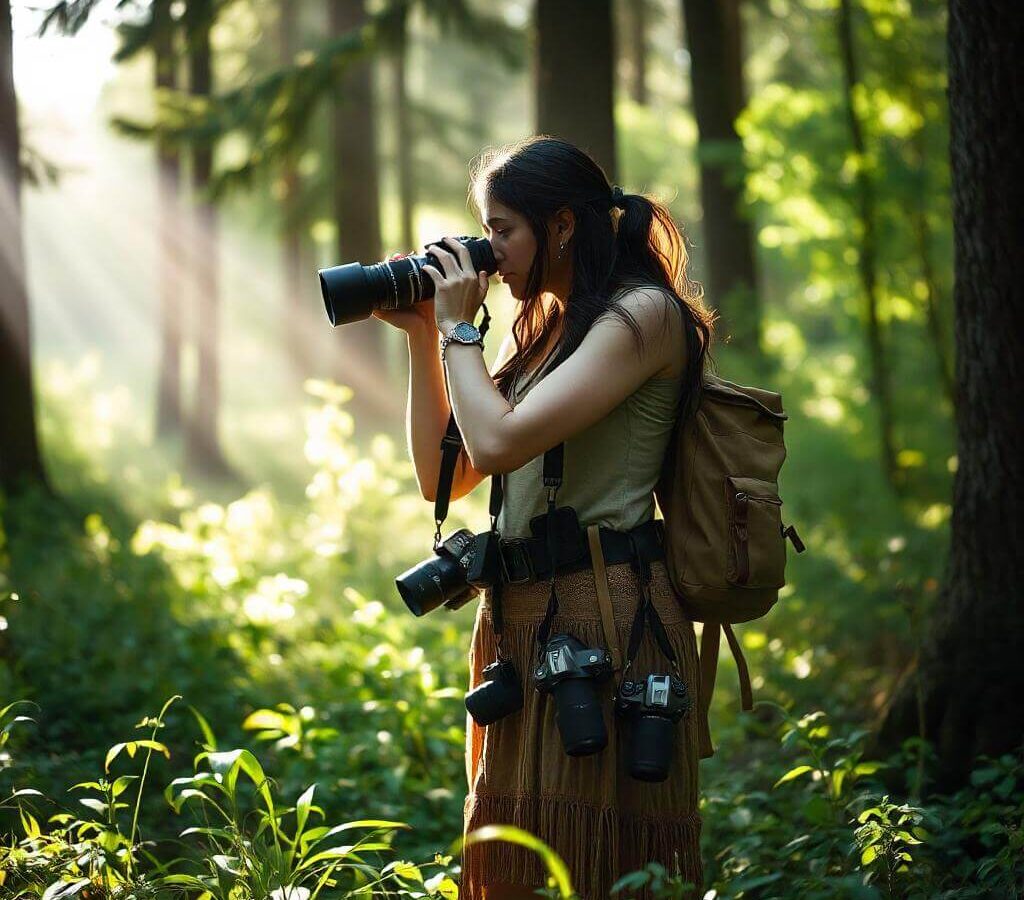 When it comes to choosing the right camera for professional photography, there are multiple factors to consider. The first step is to decide on the type of photography you want to specialize in. Are you interested in landscape, portraits, or wildlife photography? Different types of photography require different camera features. If you love landscape photography, you need a camera with high megapixels. It should also perform well in low light.
When it comes to choosing the right camera for professional photography, there are multiple factors to consider. The first step is to decide on the type of photography you want to specialize in. Are you interested in landscape, portraits, or wildlife photography? Different types of photography require different camera features. If you love landscape photography, you need a camera with high megapixels. It should also perform well in low light.
Some of the best cameras for professional photography include:
- Canon EOS 5D Mark IV
- Nikon D850
- Sony Alpha a7R IV
These cameras provide great image quality and quick autofocus. They also have many features that make them perfect for professional use. When choosing a camera, it’s also important to consider the lens options available. Look for cameras with a wide range of lenses that can help you achieve the effect you’re looking for.
In addition to the camera itself, you’ll also want to consider the accessories that come with it. A good camera bag, tripod, and memory cards can all help you get the job done efficiently and effectively. Finally, consider the camera’s connectivity options, such as Wi-Fi and Bluetooth. These can be useful for transferring professional photos to your computer or mobile device quickly and easily.
When choosing a camera body, look for one that is strong and weather-sealed. It should handle the demands of professional use. You should also think about the camera’s grip and design. These factors can impact how easy the camera is to use. In terms of budget, professional cameras can range from a few hundred to several thousand dollars. You can find a good camera at a lower price. However, buying a high-end camera can be worth it. It often gives you better image quality and more features over time.
Essential Features to Look for in a Professional Camera
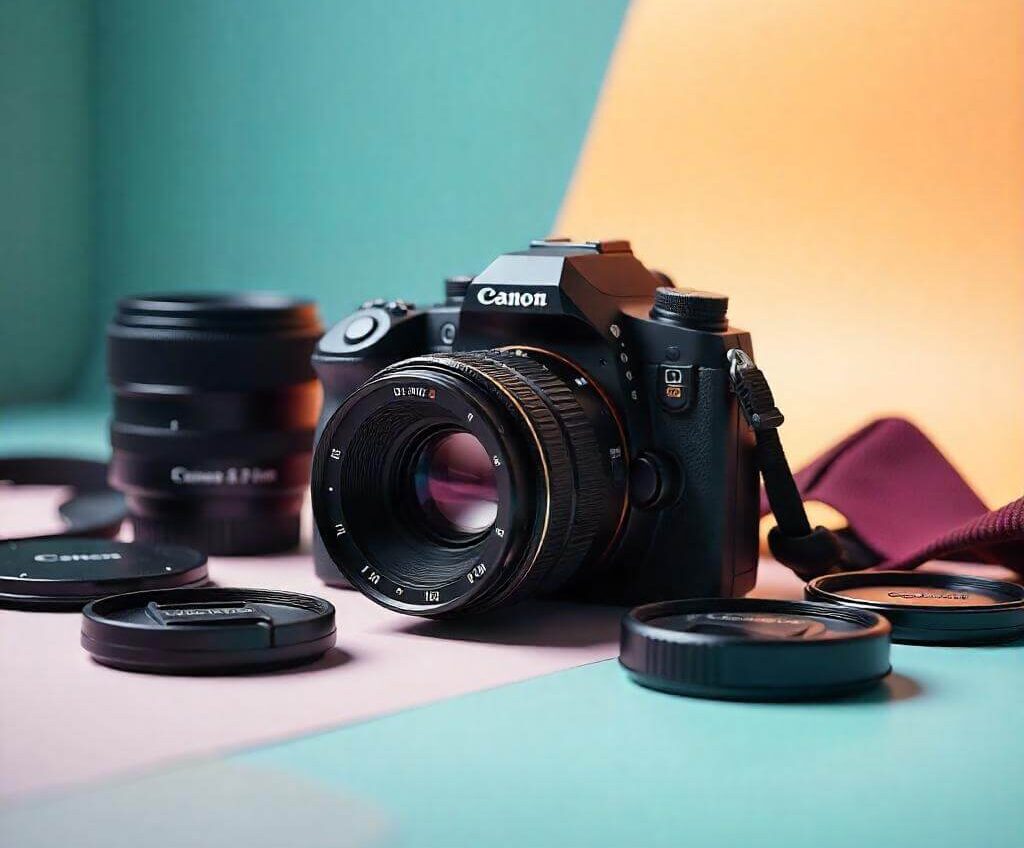 When choosing a professional camera, there are several important features to look for. The first is image resolution, measured in megapixels. A higher megapixel count can result in more detailed and higher-quality images.
When choosing a professional camera, there are several important features to look for. The first is image resolution, measured in megapixels. A higher megapixel count can result in more detailed and higher-quality images.
Another important feature is autofocused. Look for cameras with fast and accurate autofocus systems that can quickly lock onto your subject. This is especially important for fast-paced photography, such as sports and wildlife photography.
Sensor size is also an important consideration. A larger sensor can improve low-light performance. It also creates a shallower depth of field. This makes it great for portrait photography.
Finally, consider the camera’s video capabilities. If you plan to shoot video, look for cameras with 4K resolution and slow-motion capabilities.
When it comes to the camera’s display, look for a high-resolution LCD screen with good viewing angles and a varied -angle design. This can be useful for framing shots and reviewing professional photos.
In addition to the camera’s main features, also consider the availability of software updates and customer support. A camera with regular Software updates can ensure that you have access to the latest features and bug fixes. Good customer support can be helpful if you encounter any issues with your camera.
Understanding Camera Modes: Aperture, Shutter Speed, and ISO
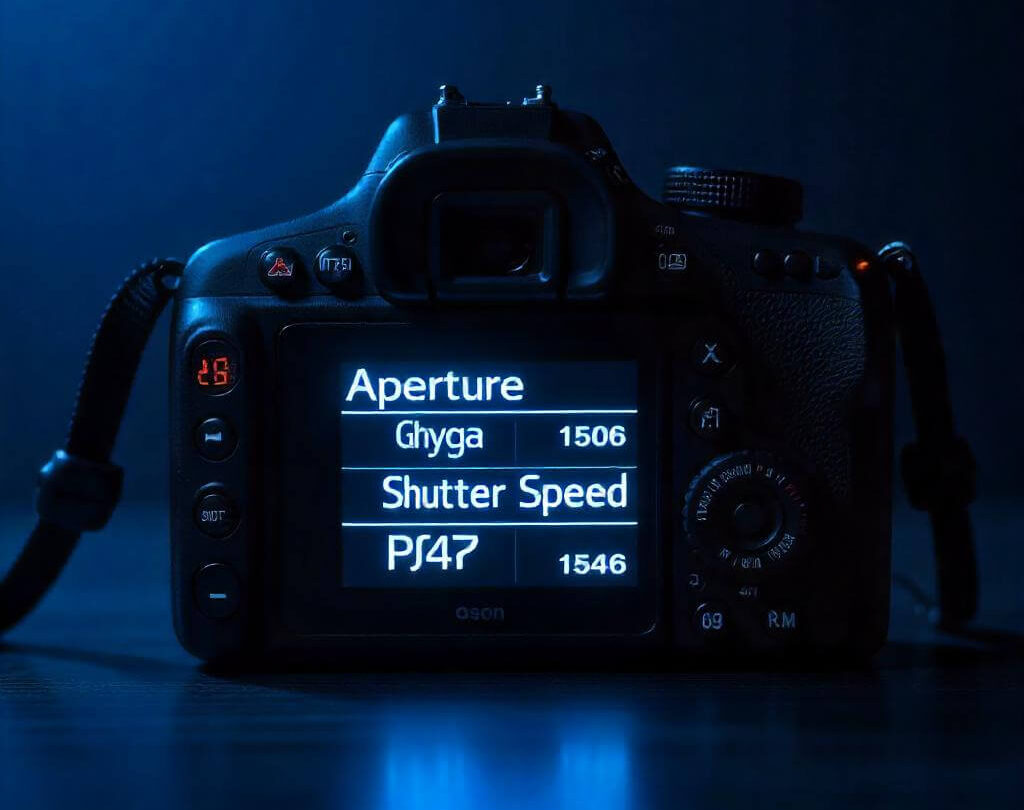 One of the most important aspects of photography is understanding camera modes. Aperture, shutter speed, and ISO are three fundamental modes that work together to capture the perfect image. Aperture refers to the size of the camera’s aperture, which controls the amount of light that enters the camera. A larger aperture (smaller f-stop number) lets in more light. A smaller aperture (larger f-stop number) lets in less light.
One of the most important aspects of photography is understanding camera modes. Aperture, shutter speed, and ISO are three fundamental modes that work together to capture the perfect image. Aperture refers to the size of the camera’s aperture, which controls the amount of light that enters the camera. A larger aperture (smaller f-stop number) lets in more light. A smaller aperture (larger f-stop number) lets in less light.
Shutter speed, on the other hand, refers to the length of time that the camera’s shutter is open. A faster shutter speed can freeze fast-moving objects, while a slower shutter speed can create a sense of motion. ISO, or sensitivity, refers to the camera’s sensitivity to light. A lower ISO (100-400) is best for bright lighting conditions, while a higher ISO (6400-12800) is best for low-light conditions. By adjusting these modes, you can create a range of effects, from a soft focus to a blurred background. You can also use them to control the amount of light that enters the camera.
It’s also important to know how these settings work together. For example, a higher ISO can add noise or grain to your professional photos, while a slower shutter speed can cause motion blur.
By learning these camera modes, you can take charge of your photography. This will help you create beautiful images that show the mood and feel of your subject.
Mastering Camera Angles and Composition
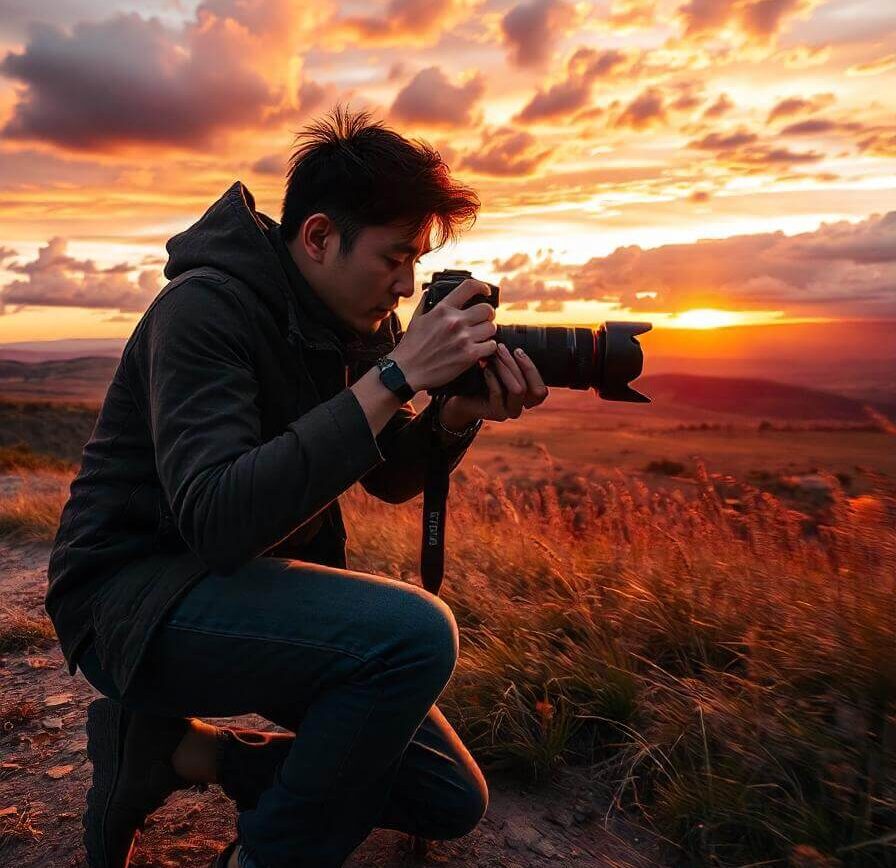 Camera angles and composition are key to great photography. Mastering them helps you take professional photos that are eye-catching and draw the viewer in. One key camera angle tip is the rule of thirds. It means splitting the frame into three parts, both across and down. Then, place your subject along one of the lines.
Camera angles and composition are key to great photography. Mastering them helps you take professional photos that are eye-catching and draw the viewer in. One key camera angle tip is the rule of thirds. It means splitting the frame into three parts, both across and down. Then, place your subject along one of the lines.
Another important aspect of camera angles is the use of leading lines. These can help guide the viewer’s eye to your subject and create a sense of depth and perspective. Composition is important for creating balance in your professional photos. You can achieve this by using techniques like framing, symmetry, and negative space.
In terms of camera angles, don’t be afraid to experiment and try new things. Trying different angles and perspectives can help you take unique and interesting professional photos. These photos will stand out from the crowd.
By learning camera angles and composition, you can improve your photography. This will help you create beautiful professional photos that show the true nature of your subject.
Lighting Essentials for Professional Photography
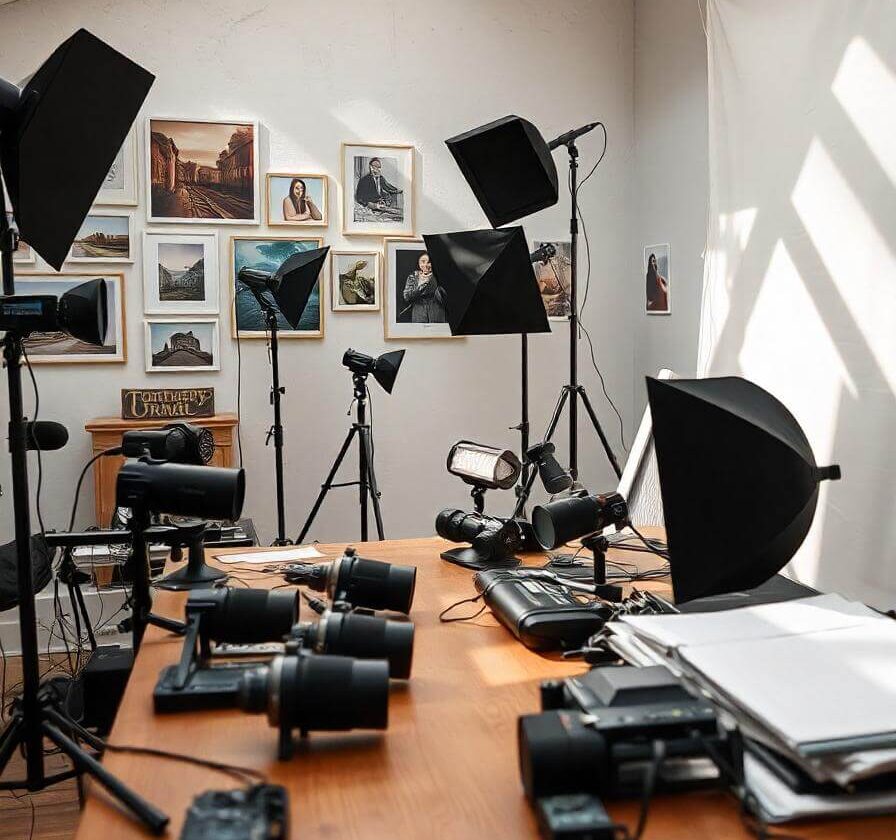 Lighting is a key part of photography. Natural light from the sun is usually the best because it’s soft and flattering. However, it can be hard to control and isn’t always available. Artificial light, on the other hand, can be controlled and manipulated to create a range of effects. This can include using flashes, strobes, and continuous lights.
Lighting is a key part of photography. Natural light from the sun is usually the best because it’s soft and flattering. However, it can be hard to control and isn’t always available. Artificial light, on the other hand, can be controlled and manipulated to create a range of effects. This can include using flashes, strobes, and continuous lights.When using natural light, it’s essential to understand how to work with it. Consider the time of day, the position of the sun, and the weather conditions. Shoot during golden hour, when the sun is low in the sky, for a warm and soft light. When using artificial light, consider the type of light you are using and how it will affect your subject. A soft box, for example, can create a soft and flattering light, while a bare flash can create a harsher light.
By mastering lighting, you can create a range of effects, from bright and bold to soft and subtle. You can also use lighting to create a sense of depth and dimensionality in your professional photos. The key to mastering lighting is understanding how to use natural and artificial light. You can then create the effect you want.
Using Camera Filters and Accessories 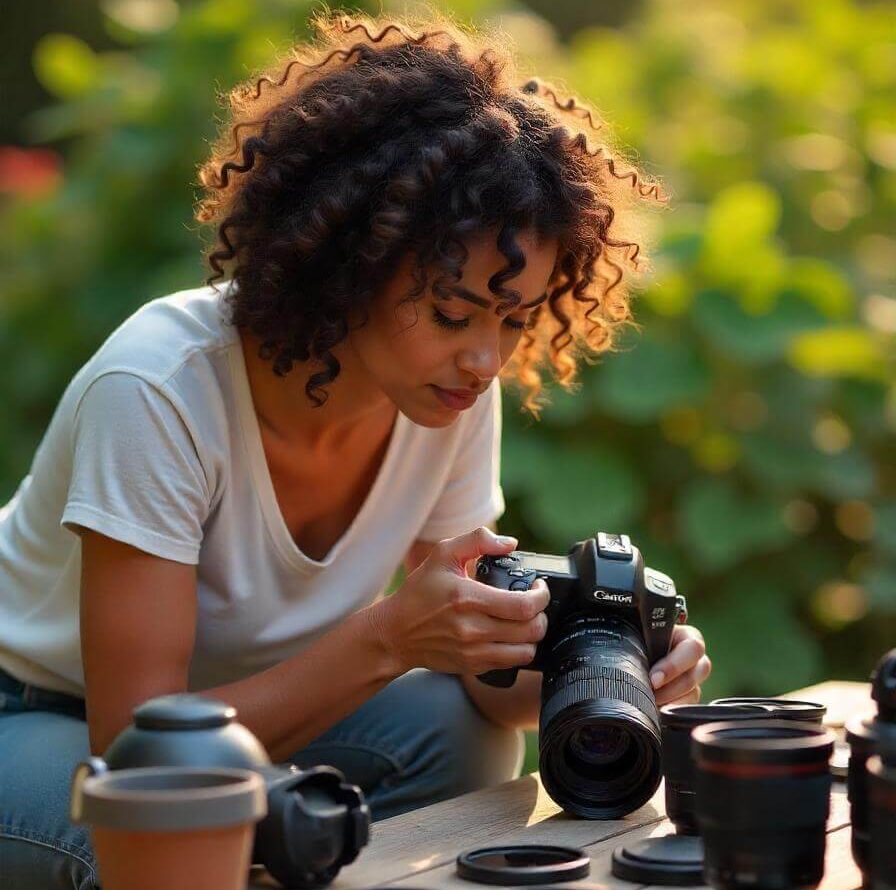 Camera filters and accessories can help you achieve professional results by providing a range of effects and benefits. One of the most popular camera filters is the polarizing filter, which can help reduce glare and enhance colors.
Camera filters and accessories can help you achieve professional results by providing a range of effects and benefits. One of the most popular camera filters is the polarizing filter, which can help reduce glare and enhance colors.
Another popular filter is the neutral density (ND) filter. It helps reduce the light entering the camera. This allows for longer shutter speeds and creative effects. Camera accessories like bags, tripods, and memory cards can help you get professional results. They offer many benefits, such as protecting your gear and improving image quality.
When choosing camera filters and accessories, think about the type of photography you do. Consider the effects you want to create. Look for high-quality products made from strong materials. They should be able to handle professional use. Using camera filters and accessories lets you create many effects, from subtle to dramatic. This helps you achieve professional results that stand out.
Tips for Enhancing Professional Photos

Editing and post-processing are important steps in the photography process. These involve using software to enhance and manipulate your professional photos, creating the final product that you see. When editing and post-processing, it’s important to keep things simple and subtle. Avoid over-processing your professional photos, as this can result in a loss of detail and an unnatural look.
Instead, focus on making subtle adjustments to contrast, brightness, and saturation. Use filters and presets to create a consistent look. Try different techniques to get the effect you want.
By mastering editing and post-processing, you can enhance your professional photos and create a professional finish. You can use these skills to create different effects, from subtle to dramatic. This helps you achieve a consistent look in your portfolio.
Best Practices for Shooting Professional Photos
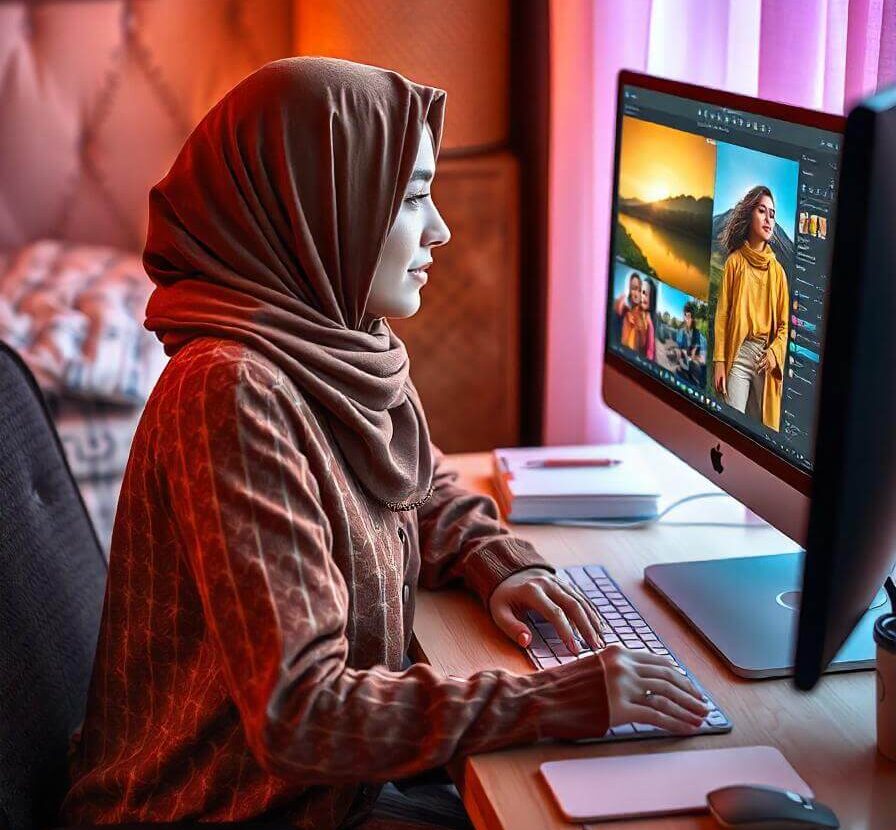 When shooting professional photos, there are many best practices to follow. One of the most important is to plan and prepare beforehand. This involves researching your subject, scouting locations, and creating a shot list.
When shooting professional photos, there are many best practices to follow. One of the most important is to plan and prepare beforehand. This involves researching your subject, scouting locations, and creating a shot list.
Another important best practice is to use a tripod and remote shutter release. These can help reduce camera shaking and noise and create a sense of stability and professionalism. When shooting, focus on your subject and avoid distractions. Use a shallow depth.
Conclusion
Selecting the right camera for professional photography involves understanding your specific needs, such as the type of photography you specialize in, the camera’s features, and the accessories that complement it. High-quality cameras like the Canon EOS 5D Mark IV, Nikon D850, and Sony Alpha a7R IV offer great resolution, fast autofocus, and essential functionalities for professional use. Mastering key photography concepts, such as camera modes, angles, lighting, and composition, is crucial in creating visually stunning images. Additionally, using the right filters, accessories, and post-processing techniques will enhance the quality and impact of your work. By following best practices, investing in the right equipment, and continuously refining your skills, you can elevate your professional photography to new heights.
Read Next: Best Cameras for Capturing Stunning Landscape Photography
